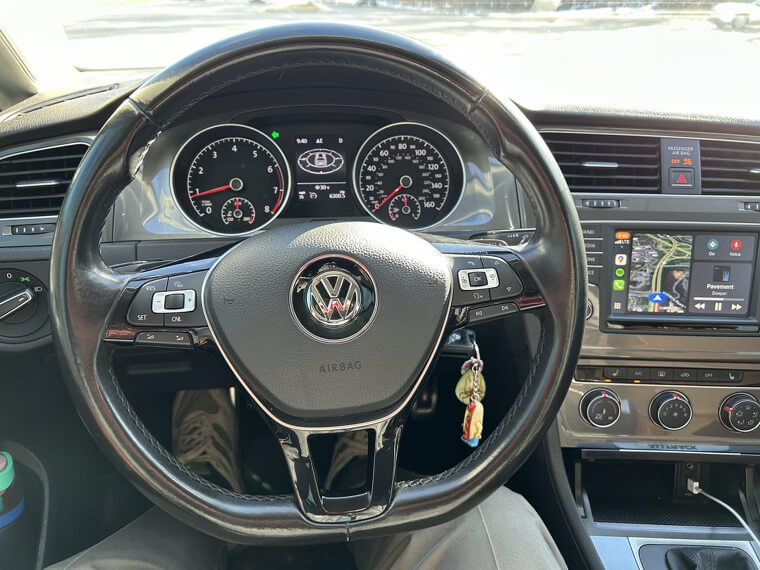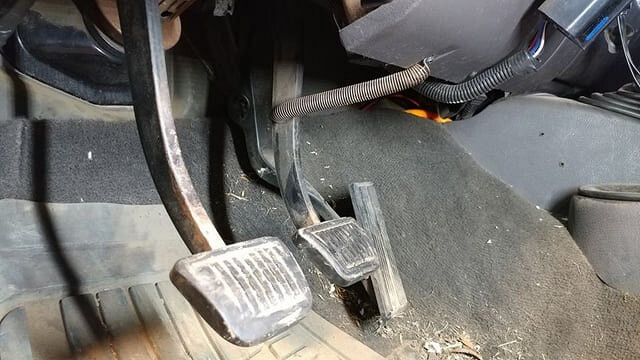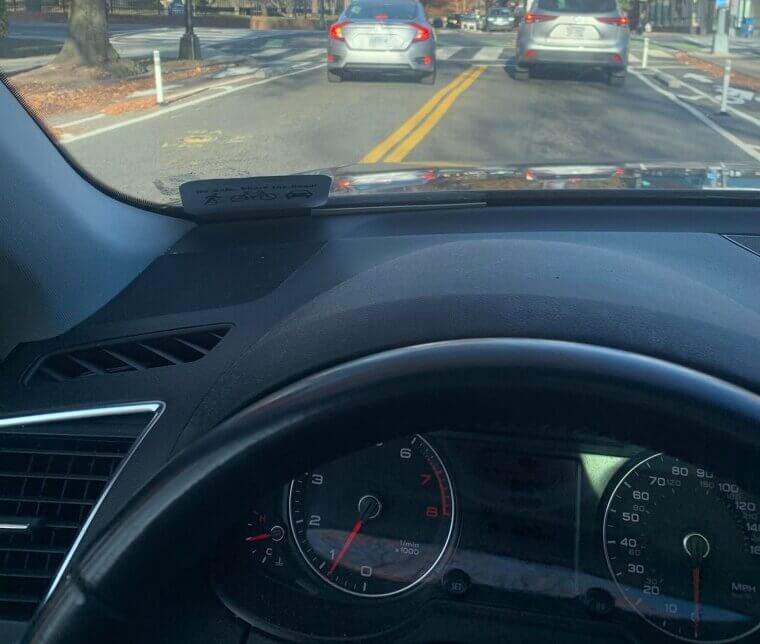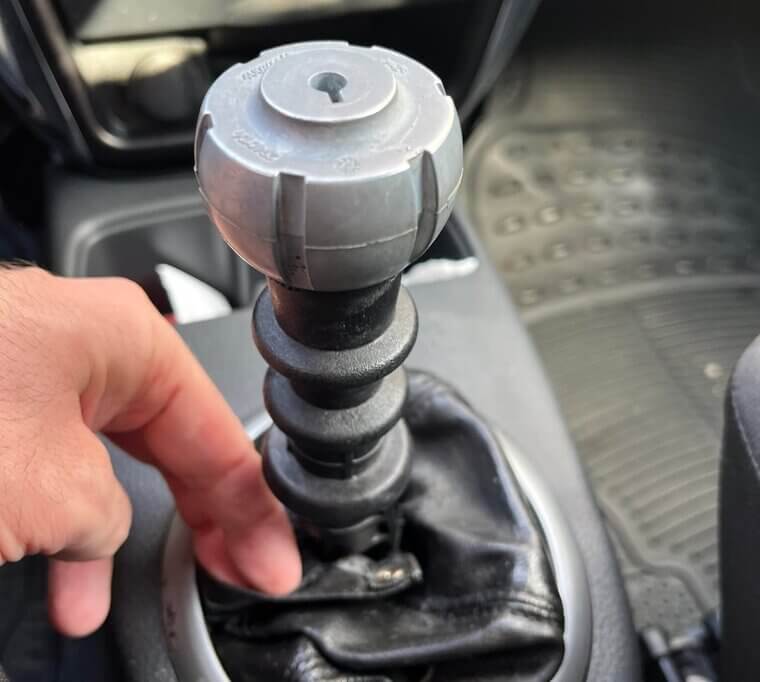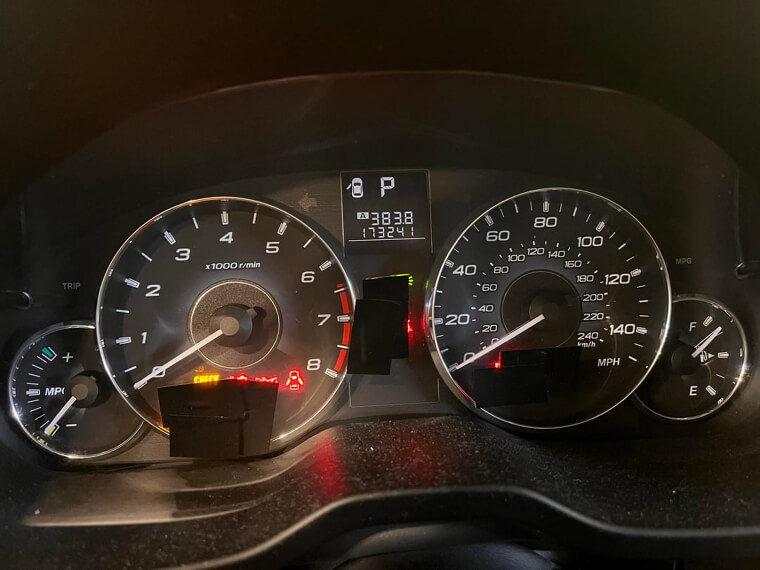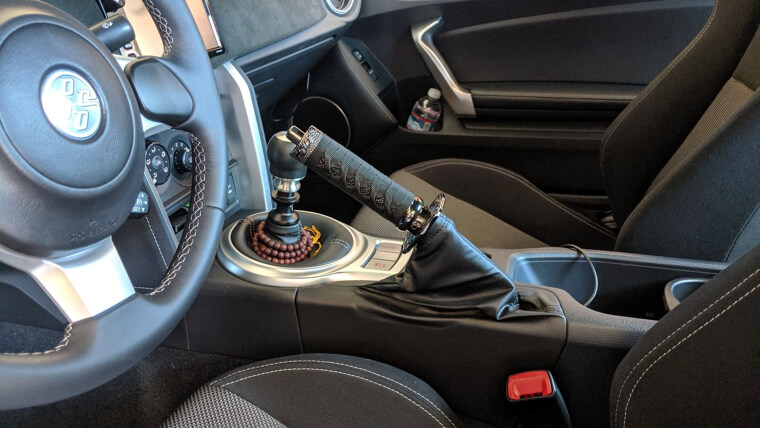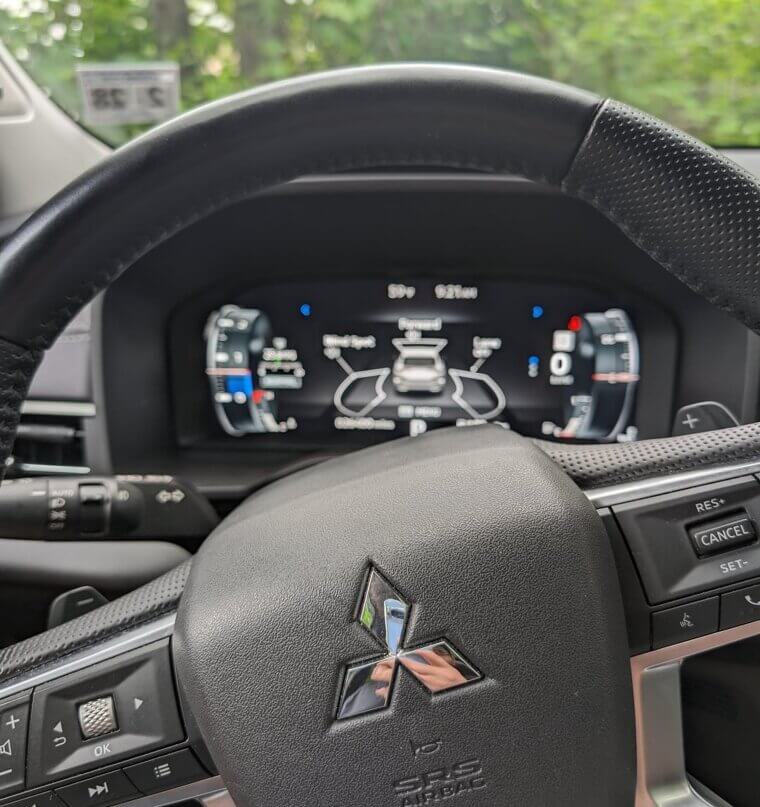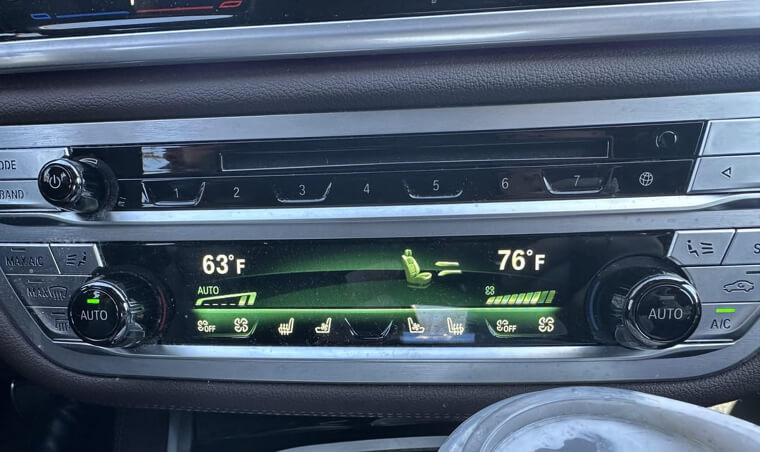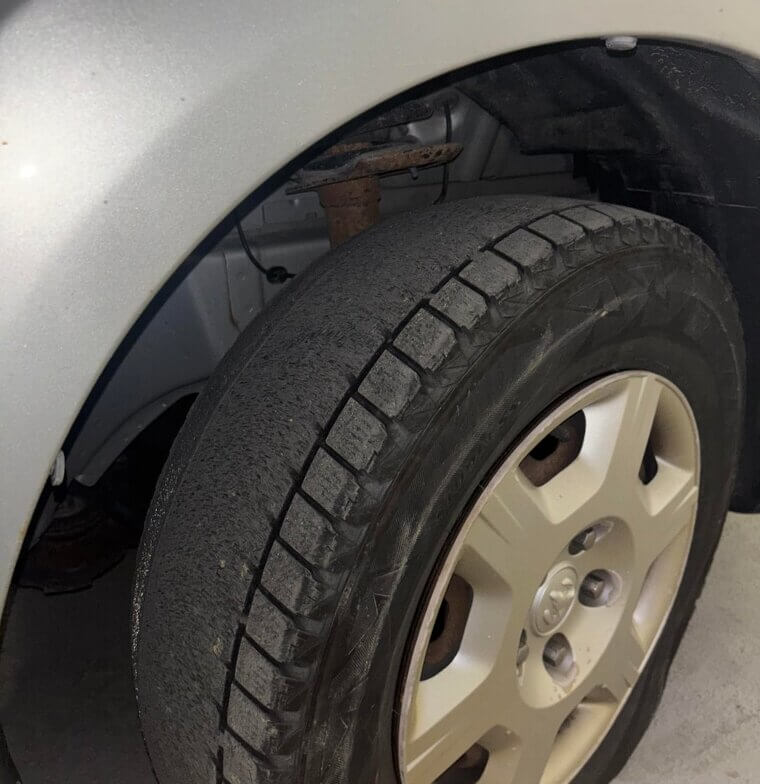A Steering Wheel That Does Not Center Itself
When you finish a turn and gently loosen your grip, the steering wheel should naturally move back toward center. If it stays tilted or feels slow to return, you may be looking at alignment issues, worn suspension parts, or steering system concerns. Many buyers ignore this because the car still feels drivable, but poor centering can lead to uneven tire wear and long term handling problems. On newer vehicles, hesitation in the steering system can also indicate trouble with electronic power steering sensors. Even a mild pull suggests something underneath is not working as it should. Fixing these problems often requires suspension work or recalibration. A steering wheel that behaves oddly during a simple turn is one of the easiest red flags to spot and one of the most important to take seriously.
Brakes That Feel Soft, Grabby, or Inconsistent
Brakes should engage smoothly and predictably. A soft pedal that sinks too far before the car slows indicates possible air in the brake lines, worn components, or hydraulic system problems. A pedal that grabs too quickly can signal uneven wear or low quality replacement parts. Vibrations during braking often point to warped rotors or calipers that are not applying pressure evenly. Many buyers assume brake quirks are minor maintenance issues, but inconsistent braking can reveal deeper trouble. Listen for grinding or squealing that continues even after light braking. These noises hint at pads that are worn past their service life or rotors that need resurfacing. Repair costs can add up quickly. If braking does not feel right on the test drive, expect follow up work or consider walking away entirely.
Strange Noises During Acceleration
Acceleration should feel steady and quiet. If you hear rattling, knocking, whining, or clicking, you may be dealing with engine problems, transmission wear, or loose components under the hood. Rattling under load can indicate timing issues or damaged mounts. A whining sound often points to transmission wear or a failing belt. Clicking near the front wheels may suggest worn CV joints. Many shoppers assume mild noises are normal because they are distracted by the excitement of the drive. A good rule is simple. If you have never heard the noise in a healthy car, treat it as a red flag. Noises under acceleration rarely fix themselves and usually lead to higher repair bills later.
Hesitation When Shifting
Whether the car is automatic or manual, shifting should feel clean. If you notice hesitation, slow engagement, rough downshifts, or slipping, the transmission may be struggling. Automatic transmissions that pause before settling into a gear often signal wear or poor maintenance. Manual transmissions that grind or resist gear changes may have clutch or synchro problems. These issues can be expensive, especially if the vehicle has been driven hard or skipped routine service. Some buyers mistake hesitation for unfamiliarity with the car. Always assume the vehicle is showing you real mechanical behavior. A problematic shift today usually becomes a full repair tomorrow.
A Check Engine Light That Appears Even Briefly
If the check engine light flickers during your test drive, take it seriously. A momentary flash can still indicate sensor trouble, misfires, emissions system issues, or fuel delivery problems. Some dealers reset warning lights before a sale, and if the issue returns quickly, it reveals an unresolved problem. Even if the car runs smoothly, a check engine warning means something in the system is out of range. Diagnostic work can cost money, and deeper engine problems add even more. A healthy car should show no warning lights at any point in the test drive. Anything else should factor heavily into your decision.
Excessive Engine Vibration
Engines vibrate slightly, but anything beyond a gentle hum is worth noting. Strong vibrations through the seat, floor, or steering wheel hint at misfires, worn mounts, or intake issues. At idle, shaking can indicate poor fuel delivery or ignition trouble. Under acceleration, vibration often points to more serious mechanical wear. Modern engines are designed to run smoothly with very little movement. When something feels off, it usually is. Buyers often overlook vibration because the car still drives, but this is one of the clearest early warnings of engine trouble. Repair costs vary widely, and some fixes require extensive labor.
A Burning or Unusual Smell
Any unusual smell inside or around the car deserves attention. A burning scent may point to worn brakes, slipping belts, overheating components, or leaking fluids. A sweet smell can indicate coolant leaks. A strong fuel odor suggests issues with the fuel system. Musty interior smells reveal moisture problems or leaks around windows or doors. Buyers often assume odors are temporary, but they often signal larger issues. Vehicles that smell unusual during a test drive rarely improve with time.
Warning Lights Hidden Behind Menu Screens
Some modern vehicles allow drivers to hide or mute warning messages behind menu options. Before the test drive, ask to cycle through all displays to ensure nothing important is being concealed. If you notice notifications about low fluid levels, overdue maintenance, or system malfunctions, assume they matter. A seller who hides alerts may be avoiding disclosure. In a dealership setting, this is a clear sign the car needs attention before purchase. In private sales, it should raise even more concern.
Sluggish Acceleration That Feels Unnatural
Every car has its own personality, but sluggish acceleration should not feel like hesitation or struggle. If the engine revs but the car moves slowly, you may be dealing with a slipping transmission, clogged fuel system, or sensor problems. If acceleration feels uneven or unpredictable, mechanical wear may be deeper than it appears. A slight delay is normal for some older vehicles, but anything dramatic deserves caution. Buyers sometimes blame sluggishness on unfamiliarity, but real mechanical issues often hide behind small symptoms.
Pulling to One Side
If the car drifts left or right without steering input, it likely has an alignment problem, uneven tire wear, or suspension issues. Pulling can also reveal past accident damage that was not repaired perfectly. During the test drive, find a straight, flat stretch of road and loosen your grip slightly. The car should track straight. If it does not, assume more investigation is needed. Alignment work is not always expensive, but suspension repairs can be. Cars that pull on the test drive often have more history than the seller admits.
Rough Idle That Shakes the Cabin
A healthy car should idle smoothly. If the engine sputters, shakes, or fluctuates in speed, something is off. Rough idle can indicate vacuum leaks, weak ignition coils, fuel system problems, or sensor failures. These issues often escalate quickly. An uneven idle is one of the simplest red flags to detect and one of the most ignored. Buyers sometimes think the car will “smooth out” once it warms up. A good idle needs no warming up.
Overly Stiff or Overly Loose Steering
Steering should not feel like a workout or a suggestion. If the wheel is too stiff, the steering system or power assist may be failing. If the wheel feels loose or vague, suspension components or steering linkages may be worn. These problems can affect safety, precision, and long term tire costs. Test how the wheel reacts at different speeds. Steering that feels inconsistent or vague usually means deeper issues.
Inconsistent Climate Control
Climate systems should respond quickly. If the air takes too long to heat or cool, or if the fan speeds behave unpredictably, the system may have failing sensors, low refrigerant, or electrical issues. A weak climate system is not just an inconvenience. Repairs can be expensive, especially on newer vehicles with complex HVAC setups. Many buyers overlook this feature during a test drive, but comfort and safety rely on it.
Windows or Locks That Hesitate
Power windows, locks, and mirrors should operate smoothly. If they hesitate, move slowly, or click, the vehicle may have electrical issues or worn motors. These are not always simple fixes. Electrical problems often come in clusters and can reveal deeper wiring concerns. If one accessory struggles, others may follow. During the test drive, try every switch. Small conveniences that fail today can become larger frustrations tomorrow.
Tires With Uneven Wear
Tire condition tells you far more than sellers expect. Uneven wear patterns suggest suspension trouble, alignment issues, or inconsistent tire rotations. Cupping, feathering, or bald spots indicate neglect or deeper mechanical problems. Replacing tires adds cost, but the underlying issues are often the real threat. A quick inspection can reveal how well the car was maintained. Even if the vehicle drives acceptably during the test, uneven tires are a sign of long term wear patterns you should not ignore.

